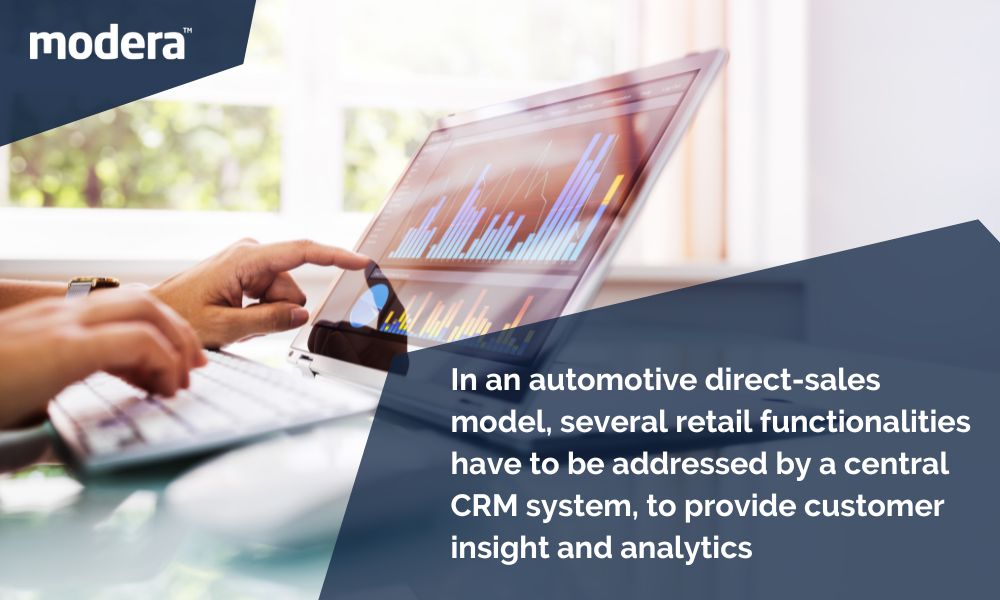
In any industry, businesses looking to succeed must adapt their processes according to the market, ever-changing customer expectations and available options. The automotive industry is no exception. The shift towards direct sales has been on the books for quite some time, but there are a few questions from how the change will impact dealers and customers to which challenges do OEMs have to prepare themselves for. Keep reading to find out the answers.
Time for change
The shift towards an automotive direct sales model has been on the radar for quite some time, especially when speaking of original equipment manufacturers (OEMs). A few players have implemented direct sales for particular products such as spare parts and used cars, while others are focusing on direct sales in specific geographic markets. There are several clear benefits for OEMs, but how it plays out for dealerships is yet to be understood.
How will dealers be impacted?
Keep in mind that the dealer has been an independent entrepreneur till date. They have bought inventory from OEMs and then sold it to customers. But with the direct sales model, the dealer has to do more grunt work. It includes following up with leads, providing detailed information to customers regarding their purchases, and tackling after-sales services. The dealer gets a commission for every new car they sell. Depending on the contract, they also get a certain percentage for additional services provided to the customer or OEM. However, it means the dealer doesn’t have to bear the risk and costs of financing and managing stock.

What are the challenges of this model?
1. 360-degree customer view
In an automotive direct-sales model, several retail functionalities have to be addressed by a central CRM system (customer relationship management system), to provide customer insight and analytics. The omni-channel experience of configuring a car on a device at home and finalizing it in a store is enabled jointly by the CRM and available customer data. Centralizing customer data has always been an issue for OEMs due to dealer agreements. Many OEMs are now renegotiating dealer contracts and incorporating facets to allow central customer data management.
2. Customer interaction at national service center (NCS)
A large portion of customer interactions are handled at a contact center, when it comes to the automotive direct sales model. A contact center is crucial for supporting and advancing the customer along the journey. New dialogue functionalities range from product consultations and test-drive bookings all the way to finalizing purchases. More product complexity, along with new digital and mobility services, and a wider range of dialogue incidents need a well-balanced set-up of contact centers to deliver professional consultation throughout the entire journey.
3. Regional specifics and overall transition
Even though a shift towards a direct sales model is coming, it can’t be implemented overnight, as there are various issues to address:
- Legal restrictions prohibiting direct sales of certain products in some regions and markets.
- Changing processes and structures according to the shift of retail and customer-care functions is a complicated transition.
- Legal constraints bind OEMs and dealerships regarding all products till the contract lasts. Contracts are usually drawn up to be market specific.

What can dealers and OEMs do to prepare for the gradual shift towards an automotive direct-sales model?
- Fine-tune their customer journey – be it dealers or OEMs, this is the chance to redefine the journey from presales to after-sales services. But both parties should be mindful of getting too busy fighting each other for a bigger share of profits, and forgetting the most important aspect – offering the best service to the customer.
- Build rapport – without a solid rapport, both sides won’t be able to perform to the best of their abilities. Dealers should concentrate on structuring an agency model to prioritize customer segments and develop unique value propositions, while enabling OEMs to meet sales and customer acquisition targets. On the other hand, OEMs have to ensure dealers take a more active approach in the customer journey.
- Seamless transition – Be it legal hurdles, restructuring OEM and dealership organizations, training personnel, or integrating data and IT, there are numerous problems during major transitions. OEMs and dealers need to make the transformation to an automotive direct sales model a top priority.
As you can see, it will be a while before we witness a full-blown transition towards an automotive direct sales model. The road ahead is likely to be full of hurdles, and it will take the effort of both OEMs and dealerships to overcome them. To ensure your business is prepared for the inevitable shift, it’s high time to invest in a high-quality automotive software solution to get you on track.

